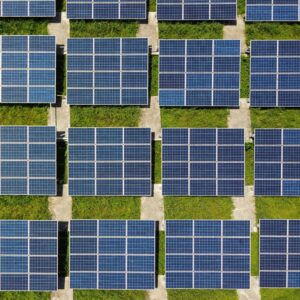Questions Remain Around BLM’s Renewable Energy Rents Rule
April 1, 2025
Questions Remain Around BLM’s Renewable Energy Rents Rule
The U.S. Bureau of Land Management’s (BLM) July 2024 Renewable Energy Rule reduces annual costs of operating wind and solar energy projects on federal lands, but its complexity makes it difficult for developers and financiers to forecast BLM charges and decide whether to opt in by July 1, 2026.
The Renewable Energy Rule overhauls how the agency charges annual rents and capacity fees for renewable energy rights-of-way. Please refer to our article on the original rule for an overview of its major components. The rule generally lowers annual charges relative to the previous framework, but its complexity has created uncertainty for renewable energy developers forecasting project expenses. Over the past nine months, clarity has emerged in some areas, but ambiguity remains in others.
In general, the rule provides that each year BLM will charge renewable energy rights-of-way the higher of either acreage rent based on the project’s size, or capacity fees based on the project’s annual MWh generation.
Acreage rent is calculated by multiplying the “state per acre value” by the number of acres in the ROW. The “state per acre value” in turn is based on the 5-year average statewide rental value of pasturelands according to data collected by the National Agricultural Statistics Service (NASS) at the time the right-of-way is issued or renewed. The original rule was not clear where in NASS’s extensive databases this information is located, which made it difficult to calculate acreage rent with certainty. Then, in August 2024, BLM published Instruction Memorandum 2024-044 establishing the “state per-acre value” for each of the 11 western states in 2024 and 2025.
Capacity fees are more complicated to calculate. The formula contains eight different factors, some of which are complex in their own right. For example, the “MWh rate” is defined as “the annual weighted average wholesale price per MWh for the major trading hubs serving the 11 Western States of the continental United States for the full 5 calendar-year.” The rule does not provide the source of this data. Instruction Memorandum 2024-044 established the “MWh rate” for 2024 and 2025, but future years are still uncertain. As another example, whether the “Domestic Content” capacity fee reduction applies to a project depends on whether the facility meets the supply chain standards under an entirely separate regulatory framework promulgated by the Office of Management and Budget.
Adding to the uncertainty, the Trump administration’s February 2025 Executive Order 14148 formally rescinded Instruction Memorandum 2024-044. As of the date of this article, the clarifications and implementing guidance of the rent rule are no longer effective policy, even though the rule itself remains on the books.
Then there are still outstanding questions about the rule that have never been adequately addressed. For example, if an existing project opts into the new rent and fee framework, will BLM re-issue the right-of-way with a new serial number and potentially trigger financing and insurance requirements? On the other hand, if an existing project declines to opt in, will the rule’s new “minimum performance standard” requiring annual energy output of at least 75 percent of nameplate capacity still apply to it by default?
BLM’s approach to these questions is still emerging and, in the absence of formal policy guidance, interpretation can vary across offices. In the meantime, renewable energy developers on federal lands should use all available information to forecast right-of-way charges under the Renewable Energy Rule and determine whether it makes sense to opt into the new framework before the opt-in period ends on July 2, 2026.
Bell Kearns specializes in advising on the review and entitlement of large-scale renewable energy projects. If you have any questions regarding this article, please feel free to contact us at +1.415.230.0599 or info@bell-kearns.com.

